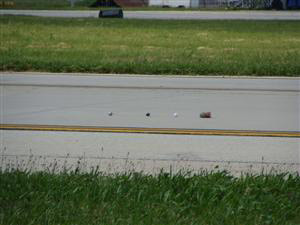 You arrive at the airport for a local solo on a spring morning, and learn from the folks at your FBO that the runway is closed following a minor mishap.
You arrive at the airport for a local solo on a spring morning, and learn from the folks at your FBO that the runway is closed following a minor mishap.
An airplane “ground looped” after landing about an hour ago. It has already been removed from the runway, but airport personnel and ground vehicles remain on the scene. What are they doing? When can you depart?
The workers are scouring the runway for fragments that may have separated from the damaged aircraft; the debris is hazardous and must be removed before operations resume.
Foreign object damage even goes by its own acronym, FOD, in safety literature. Student pilots become most familiar with precautions to be taken against FOD during preflight inspections, when you check for birds’ nests under the cowling and elsewhere, and when you inspect pitot tubes and static ports for obstructions.
Pilots also must be alert to foreign object damage when taxiing over broken pavement or on a gravel surface, when the propeller could be nicked by a pebble or a chunk of asphalt. That’s serious because prop failure could eventually result from damage that goes undetected.
“The presence of FOD is a continuing concern at our nation’s airports,” according to the FAA. “FOD creates safety hazards and can ultimately impact safe operations by damaging aircraft. Airports, Airlines, and the General Aviation community have taken the necessary steps to minimize FOD by engaging in successful FOD management programs.” (See Advisory Circular AC 150/5210-24 for more information.)
FOD is defined as “any object, live or not, located in an inappropriate location in the airport environment that has the capacity to injure airport or air carrier personnel and damage aircraft.” That could include pieces of aircraft, ice, trash, or objects left on the ground near an aircraft.
“Keep an eye out for rocks, stray tools, and sharp metal objects (e.g., nails, screws) that can damage aircraft or tires. If you see something, pick it up and throw it away,” advises the Air Safety Institute’s Safety Brief “Ramp Operations.”
Pilots take the matter seriously: A South Carolina aviation organization urged its airport communities in its newsletter to proactively fight FOD. Volunteers at the Greenville Downtown Airport rose to the challenge, holding an event to scour the airport’s two runways for FOD—with food offered after the work was done.



